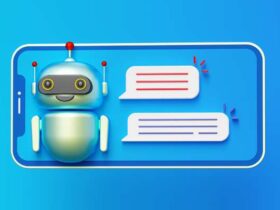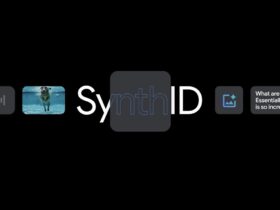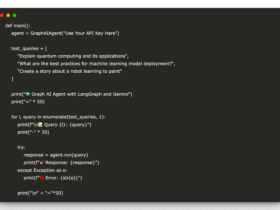Businesses are witnessing a seismic shift in how they operate, thanks to groundbreaking advancements in intelligent technology. This year’s tools go beyond basic task repetition—they blend machine learning with human-like reasoning to optimize workflows, reduce errors, and unlock new efficiencies. Let’s explore how these innovations are reshaping industries.

Modern systems now handle unstructured data, adapt to dynamic conditions, and even predict bottlenecks. For example, UiPath’s robotic process automation integrates with enterprise apps to manage invoice processing, while Moveworks uses natural language to resolve IT tickets autonomously. These solutions aren’t just futuristic—they’re solving real problems today.
Data-driven decision-making sits at the core of this revolution. Tools like Microsoft Copilot analyze patterns in emails and documents to prioritize tasks, while Gemini streamlines Google Workspace routines. By merging technical precision with intuitive design, they empower teams to focus on strategic work rather than repetitive chores.
We’ve analyzed platforms like Surfer SEO and Copy.ai that turn complex data into actionable insights. Their ability to generate optimized content or refine marketing strategies demonstrates how intelligent systems bridge the gap between raw information and business outcomes. This isn’t just about speed—it’s about smarter resource allocation.
Key Takeaways
- Latest tools combine machine learning with adaptive reasoning for complex workflows
- Intelligent automation reduces manual effort in areas like data analysis and customer support
- Platforms integrate with existing software ecosystems for seamless adoption
- Data management improvements drive faster, more accurate business decisions
- Real-world applications span content creation, coding, and cross-team collaboration
Understanding the Evolution of Automation
Automation’s story is one of gradual innovation, evolving from rigid robots to dynamic problem-solvers. Early systems focused on repetitive tasks like assembly line work, but today’s solutions handle complex decision-making. Let’s explore how this transformation unfolded.
From Rule-Based to Reasoning Systems
The first wave—robotic process automation (RPA)—excelled at structured data processing. Think spreadsheet entries or invoice matching. Banks like ABANCA used these tools to cut loan approval times by 40%. But RPA had limits. It couldn’t adapt when faced with unexpected inputs.
Enter intelligent automation. By blending RPA with machine learning, systems began handling exceptions. For example:
- Healthcare platforms now cross-check insurance eligibility across 5+ databases
- Retail management tools predict inventory shortages 3 weeks in advance
Generative AI Enters the Stage
Last year’s breakthrough came with generative models. These systems don’t just follow rules—they create solutions. A telecom company recently used this tech to draft personalized service contracts, reducing customer onboarding from hours to minutes.
This progression shows how businesses now automate entire processes, not just single tasks. The key? Combining technologies into unified frameworks that learn as they work.
Harnessing AI-powered automation for Business Efficiency
Modern enterprises are discovering smarter ways to streamline operations through adaptive technology. By merging machine learning with core business processes, teams achieve measurable gains in speed and accuracy. Let’s examine how these innovations drive tangible results.
Boosting Productivity with Machine Learning
Systems that learn from patterns transform how companies handle repetitive tasks. For example, Siemens reduced production costs by 25% using algorithms to automate quality checks. Retailers now predict inventory needs weeks ahead, cutting waste by 18% on average.
Cognitive automation takes this further. These tools analyze customer interactions to refine responses over time. T-Mobile’s chatbot slashed wait times by 30% while maintaining service quality. Such technologies free employees for strategic work, creating a 40% productivity boost reported by Salesforce users.
Enhancing Decision-Making with Advanced Data Insights
Real-time analytics turn raw data into actionable plans. Unilever’s forecasting errors dropped 30% after implementing AI-driven supply chain tools. Financial firms use similar systems to detect fraud 50% faster than manual reviews.
| Factor | Traditional Approach | AI-Driven Approach |
|---|---|---|
| Response Time | 3-5 business days | Under 2 hours |
| Error Rate | 12% manual entry mistakes | Less than 1% |
| Scalability | Limited by staff size | Handles 10x volume spikes |
McKinsey’s research highlights that 40% of routine management activities can be automated. This shift allows leaders to focus on innovation rather than oversight. As one logistics director noted: “Our teams now solve problems instead of chasing data entry errors.”
Key Features of Next Generation Automation Tools
Modern solutions are rewriting the rules of operational efficiency through three game-changing capabilities. These innovations don’t just complete tasks—they understand context, learn from interactions, and connect disparate systems like never before.
Advanced Capabilities: NLP, ML, and Seamless Integration
Natural language processing lets tools interpret emails, contracts, and even voice commands. Microsoft OmniParser V2, for instance, transforms PDFs into structured data with 98% accuracy. This eliminates hours of manual entry in fields like healthcare claims processing.
Machine learning takes automation further by identifying patterns humans miss. Retailers now use these systems to predict inventory shortages three weeks early. As one logistics manager shared: “Our stock errors dropped 40% after implementing adaptive algorithms.”
| Feature | Traditional Tools | Next-Gen Solutions |
|---|---|---|
| Data Handling | Structured formats only | Process PDFs, emails, images |
| Adaptability | Fixed rules | Learns from new data inputs |
| Integration | Single-platform focus | Connects 15+ enterprise systems |
Seamless connectivity is the final pillar. Modern platforms sync with CRM software, payment gateways, and predictive analytics tools simultaneously. This unified approach helped a telecom company reduce customer onboarding from 48 hours to 19 minutes.
These advancements create workflows that improve with use. They’re not just tools—they’re evolving partners in operational excellence.
Industry Use Cases and Practical Applications
Industries are seeing tangible results by applying intelligent systems to core operations. From answering customer queries to processing medical claims, these solutions deliver measurable improvements in speed and accuracy.

Revolutionizing Customer Service and Support
Chatbots now resolve 68% of routine inquiries without human intervention. Best Buy’s virtual assistant handles delivery rescheduling and subscription management, cutting wait times by 45%. Retailers like Carrefour use AI to provide personalized shopping recommendations, boosting sales by 19%.
“Our support team focuses on complex cases now,” notes a Twilio executive. Automated systems handle 80% of initial requests, freeing staff for strategic problem-solving.
Transforming Financial and Healthcare Processes
Banks process loan applications 60% faster using document analysis tools. Fundwell’s platform matches businesses with funding options in minutes instead of weeks. Healthcare providers like Bennie Health automate benefits management, reducing HR workload by 30%.
| Industry | Challenge | Solution | Outcome |
|---|---|---|---|
| Retail | 24/7 customer queries | AI shopping assistants | 22% higher satisfaction |
| Banking | Fraud detection delays | Real-time transaction monitoring | 53% faster alerts |
| Healthcare | Claims processing errors | Automated eligibility checks | 41% cost reduction |
Motorola’s AI features demonstrate cross-industry potential—summarizing meetings and editing images through voice commands. These practical applications prove that smart tools create value beyond mere task completion.
Challenges and Considerations for AI-Driven Automation
Implementing intelligent systems brings transformative potential—but not without critical challenges. Organizations must navigate evolving regulations while ensuring tools enhance rather than disrupt workforce dynamics.
Overcoming Regulatory and Compliance Hurdles
Global standards like GDPR and CCPA require meticulous data handling. A healthcare provider recently faced $1.5M fines before implementing blockchain-based audit trails. Three key strategies help:
| Challenge | Traditional Approach | Modern Solution |
|---|---|---|
| Data Privacy | Manual access logs | Real-time encryption tracking |
| Bias Prevention | Quarterly reviews | Continuous model monitoring |
| Audit Readiness | Spreadsheet records | Automated documentation systems |
“Our compliance team now spots risks 83% faster using AI pattern detection,” shares a fintech compliance officer. Human validation remains crucial—67% of companies maintain hybrid review teams for sensitive customer interactions.
Optimizing Workforce Transition and Employee Empowerment
Resistance often stems from misunderstanding tools’ roles. Motorola’s upskilling program reduced turnover 22% by training staff as automation coordinators. Successful transitions focus on:
- Clear communication about benefits
- Hands-on tool customization workshops
- Career path mapping for AI-augmented roles
When a logistics firm introduced warehouse robots, they promoted 30% of floor staff to management positions overseeing systems. This approach maintains institutional knowledge while boosting operational efficiency.
Building a Successful Automation Strategy
Creating an effective automation roadmap requires balancing technical capabilities with human needs. We’ve identified three pillars that turn fragmented efforts into cohesive, results-driven initiatives.

Defining Success Metrics Early
Start by linking automation goals to specific business outcomes. A logistics company reduced shipping errors by 52% after targeting “order accuracy” as their key metric. Track ROI by comparing implementation costs against gains like:
- 40% faster customer query resolution
- 30% reduction in manual data entry hours
- 22% lower compliance fines through automated audits
Selecting Adaptable Solutions
Prioritize tools that grow with your organization. Red Hat’s automation platform connects to 120+ enterprise systems, while Zapier handles scaling across departments. Look for:
| Feature | Basic Tools | Advanced Solutions |
|---|---|---|
| Integration | 5-10 apps | 100+ connectors |
| User Access | Single-team | Cross-departmental |
| Customization | Pre-built templates | API-driven workflows |
Cultivating Team Ownership
Involve employees from day one. A healthcare network trained nurses to co-design patient intake bots, cutting onboarding time by 65%. Establish HR workflows that identify skill gaps and create mentorship programs. As one operations manager noted: “Our staff now sees automation as career fuel, not job threats.”
Conclusion
The transformation brought by intelligent systems marks a new chapter in operational excellence. Today’s tools merge machine learning with human expertise to simplify complex processes, from resolving customer queries to optimizing supply chains. Real-world results speak volumes—retailers cut response time by half, while healthcare providers reduced errors in claims processing by 41%.
Successful implementation hinges on strategic management and continuous improvement. Best Buy’s chatbot upgrades and Motorola’s upskilling programs show how blending technologies with team empowerment drives sustainable growth. Regular audits and adaptable workflows ensure systems evolve alongside business needs.
We’re committed to helping organizations navigate this shift responsibly. By prioritizing compliance and customer experience, leaders unlock productivity gains without sacrificing quality. The future belongs to those who view intelligent automation not as replacement, but as reinforcement for human ingenuity.
Ready to redefine your team’s potential? Start by mapping tasks that benefit most from precision and scale. With the right strategy, every organization can turn raw data into decisive action—today and beyond.










